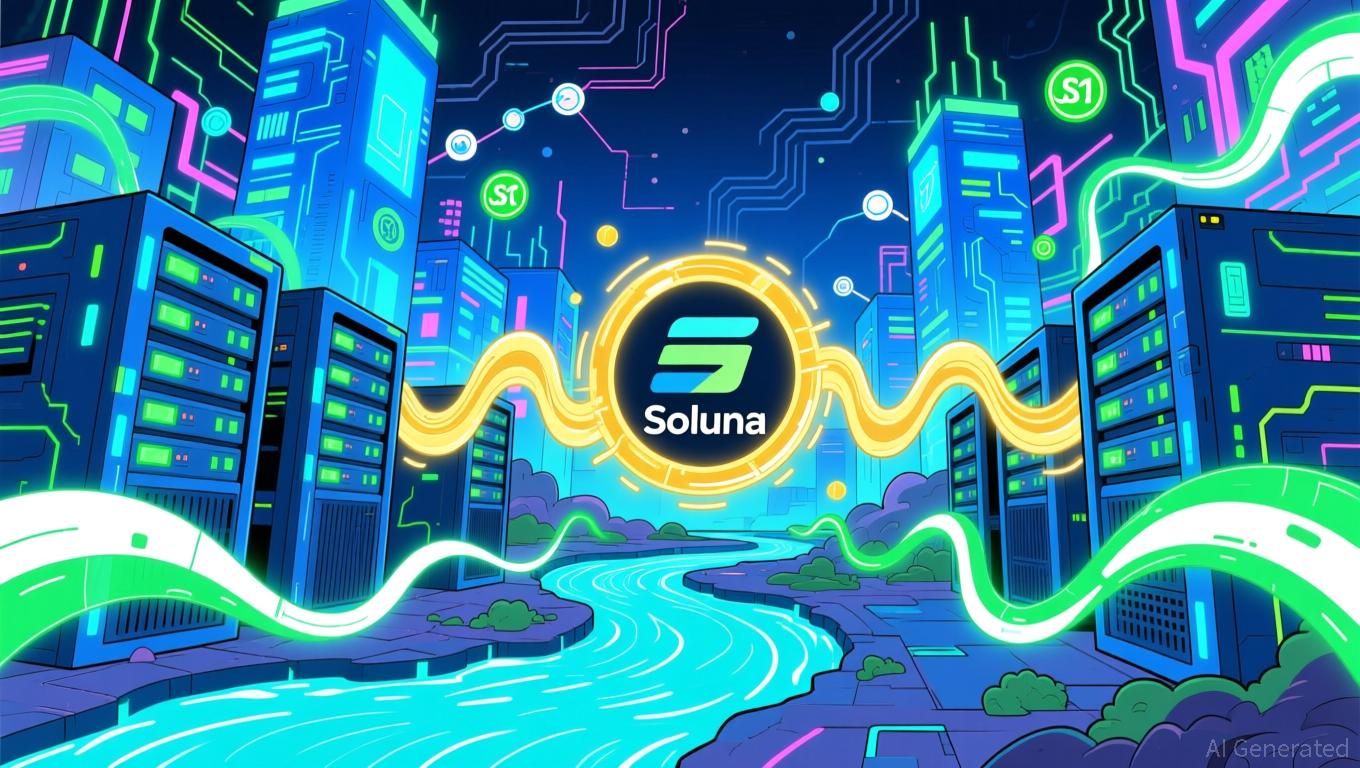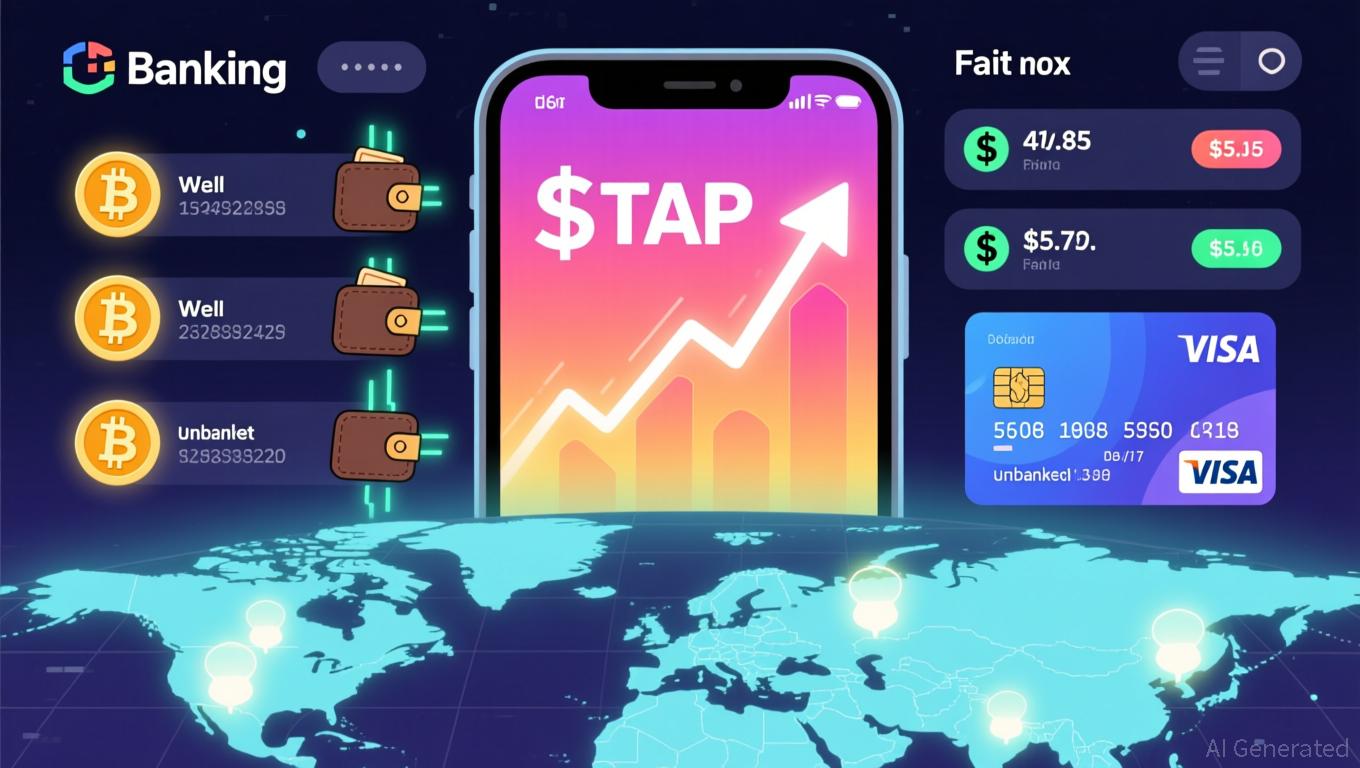Tokenization Offers a Solution to Crypto's Regulatory Challenges
- Tokenization bridges crypto innovation and regulation by digitizing assets into blockchain-based tokens, enabling real-time compliance with AML and investor protection rules. - Case studies show tokenization streamlines supply chains (Asetek) and secures R&D pipelines (Vertex Pharmaceuticals) while embedding jurisdictional compliance into smart contracts. - Despite challenges like interoperability risks, EU's MiCA framework and industry collaboration signal progress toward harmonizing tokenization standa
The convergence of blockchain and established financial systems is undergoing a significant transformation, with tokenization emerging as a promising link between the world of cryptocurrencies and regulatory authorities. Historically, the industry has struggled with regulatory compliance, but recent progress indicates that turning assets into blockchain-based tokens could help decentralized platforms meet the expectations of global regulators.
Tokenization is increasingly viewed as a remedy for persistent transparency and accountability gaps within crypto markets. By transforming assets such as real estate, equities, or commodities into programmable digital tokens, this approach allows for instant monitoring of ownership and transaction histories. Such features support regulatory goals like anti-money laundering (AML) compliance and investor safeguards, which have been challenging to enforce in decentralized environments, as highlighted in
Recent industry developments further illustrate tokenization’s potential to bridge the gap between crypto and regulation. In the third quarter of 2025, Asetek, a prominent provider of liquid cooling technologies, showcased how tokenization can optimize supply chain operations, as reported by
Pharmaceutical firms such as Vertex Pharmaceuticals are also investigating tokenization for managing intricate research and development processes, as mentioned in
Nevertheless, obstacles persist. Regulators must address the technical intricacies of blockchain to ensure that tokenization does not introduce new threats, such as interoperability challenges or weaknesses in smart contracts. Achieving international consistency in tokenization standards will also be essential to prevent fragmented regulatory landscapes. Still, the increasing cooperation between industry stakeholders and regulators—as seen with initiatives like the EU’s Markets in Crypto-Assets (MiCA) regulation—points toward greater alignment.
As tokenization evolves, its capacity to integrate compliance directly into asset management processes could be crucial for merging crypto innovation with regulatory requirements. By enhancing transparency, traceability, and governance, tokenization has the potential to move crypto from a loosely regulated space to a more structured, institutionally accepted asset class.
Disclaimer: The content of this article solely reflects the author's opinion and does not represent the platform in any capacity. This article is not intended to serve as a reference for making investment decisions.
You may also like
Solana News Update: Infrastructure Improvements and ETFs Drive Solana’s Expansion, Yet Price Drops Challenge Positive Outlook
- Solana's liquidity surges via $280M ETF inflows and infrastructure upgrades, including 20x faster archive calls and 99.95% uptime from Alchemy. - USD1 stablecoin challenges USDC's $9B dominance on Solana through Bonk/Raydium partnerships and $2.91B circulation growth since April 2025. - Despite $5B projected ETF inflows, Solana's price fell to $175 amid bearish technical indicators and 30% Q3 user base decline, raising sustainability concerns. - Regulatory clarity from the 2025 GENIUS Act and Tangem's US

Stablecoin Staking Boom Prompts Hourglass to Halt Operations, Emphasizing Safety Above Rapid Growth
- Hourglass paused Phase 2 stablecoin deposits after $650M in deposits exceeded the $500M cap, prioritizing security amid high demand. - The platform restricted eligibility to KYC-compliant deposits, excluding Etherscan/programmatic transactions to mitigate regulatory risks. - The pause reflects growing industry focus on compliance following 2022's UST collapse, though reactions remain mixed over delayed rewards. - Hourglass aims to strengthen its tokenomics and market position through controlled scaling,

Zcash Latest Updates: Privacy-Focused Zcash Joins the Surge of Institutional Crypto Interest
- Zcash (ZEC) surged to a $490 peak in 2025, surpassing $8B market cap, driven by technical momentum, privacy upgrades, and industry trends toward financial privacy. - Electric Coin Co. plans Q4 2025 enhancements, including ephemeral addresses and P2SH wallets, to strengthen ZEC's 20–25% shielded transaction model. - Zcash's rise coincides with Bitcoin's institutional adoption, positioning it as a flexible privacy alternative to Monero, with market cap briefly exceeding XMR's. - Despite bullish indicators,
Digitap Brings the Future of Crypto Utility to You Now, Surpassing Competitors
- Digitap ($TAP) leads 2025 crypto bull run with $1. 3M presale, Visa-backed debit cards, and a deflationary token model. - Outperforms peers like Cardano (ADA) and Avalanche (AVAX), which dropped 30-40% due to weak adoption and lack of catalysts. - Targets 1.4B unbanked adults with no-KYC onboarding and 1% cross-border fees, disrupting a $290T payments market. - Tokenomics allocate 50% profits to buybacks, with 90M+ tokens sold and analysts projecting $15 price target for 42M users.
